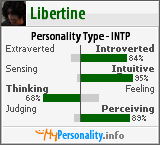The earliest episodes of Sesame Street are now available on DVD. But there's a curious warning label on the very first episode, which originally aired on November 10, 1969:
“These early ‘Sesame Street’ episodes are intended for grown-ups, and may not suit the needs of today’s preschool child.”
Huh?
What's so horrible about a vintage children's show you might ask? And what makes the company that released the DVD think that preschoolers of the late 1960s were tougher and able to handle more than today's cocooned-in-bubble-wrap 2007 toddlers?
Cookie Monster used to appear in a parody skit with a pipe, which he later gobbled. Carol-Lynn Parente, the executive producer of “Sesame Street,” explained,“That modeled the wrong behavior” — smoking, eating pipes — “so we reshot those scenes without the pipe, and then we dropped the parody altogether.”
And then there's the ever-depressive Oscar the Grouch. According to a New York Times article, Oscar seems irredeemably miserable on the first episode — hypersensitive, sarcastic, misanthropic. (Bert, too, is described as grouchy; none of the characters, in fact, is especially upbeat except maybe Ernie, who also seems slow.) “We might not be able to create a character like Oscar now,” Parente said.
Also on the first episode, a lonely little girl, Sally, is asked by a grown man she just met, Gordon, to come visit his home. Oh, no! He might be a sexual predator! Never mind that all that happened was that Sally got to meet Gordon's wife and was fed milk and cookies. But it might have been fattening whole milk and the cookies might have had trans fat in them! Horrors!
On the premiere show, Snuffleupagus is visible only to Big Bird. This was changed in 1985 so that all the characters can see him, so Big Bird wouldn't seem so "weird" and "creepy" to other people. Cookie Monster also eats only cookies -- they can't be showing sensitive 2007 kids characters who don't eat a balanced diet; someone who eats for the sheer joy of it, instead of for utilitarian reasons.
Another feature of the earlier Sesame Street that might not fly today was that it pretty much accepted people as they were and did not expect them all to ambitiously "shape up" in every area of their lives -- you weren't expected to change very much. Learning was presented as a way to make life more interesting and colorful, not necessarily as the fast-track to success -- it was valued for its own sake. According to the New York Times article: "it encouraged us, above all, to be nice to our neighbors and to cultivate the safer pleasures that take the edge off — taking baths, eating cookies, reading."
Though I was already too old for Sesame Street when it premiered -- at age 11, I was part of the Captain Kangaroo generation --I saw some of those earlier episodes with my young nieces. There was nothing wrong for kids to see in them then, and I'm guessing kids haven't changed much in the nearly 40 years since.
Parents of toddlers: buy them and let them watch.
Thoughts?
Subscribe to:
Post Comments (Atom)




1 comment:
I can't believe Sesame Street has a warning label....come on! I grew up with Sesame Street, and there's nothing wrong with me...at least not from watching Sesame Street!
Post a Comment